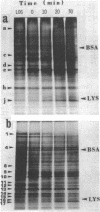Abstract
Spore formation of Myxococcus xanthus can occur not only on agar plates during fruiting body formation, but also in a liquid culture by simply adding glycerol, dimethyl sulfoxide, or phenethyl alcohol to the culture. This chemically-induced spore formation occurs synchronously and much faster than that occurring during fruiting body formation. Dramatic changes in patterns of protein synthesis were observed during chemically-induced spore formation, as had previously been observed during fruiting body formation (Inouye et al., Dev. Biol. 68:579–591, 1979). However, the production of protein S, one of the major development-specific proteins during fruiting body formation, was not detected at all, although protein U, another development-specific protein, was produced in a late stage of spore formation as in the case of fruiting body formation. This indicates that the control of the gene expression during chemically-induced spore formation is significantly different from that during fruiting body formation. It was also found that during spore formation, every cell seems to have a potential to form a spore regardless of its age, since smaller cells as well as larger cells separated by sucrose density gradient centrifugation could equally form spores upon the addition of glycerol. Patterns of protein synthesis were almost identical for all the three chemicals. However, the final yield of spores was significantly different depending upon the chemicals used. When phenethyl alcohol was added with glycerol or dimethyl sulfoxide, the final yields were determined by the multiple effect of the two chemicals added. This suggests that although these chemicals are able to induce the gene functions required for spore formation, they may have inhibitory effects on some of the gene functions or the processes of spore formation.
Full text
PDF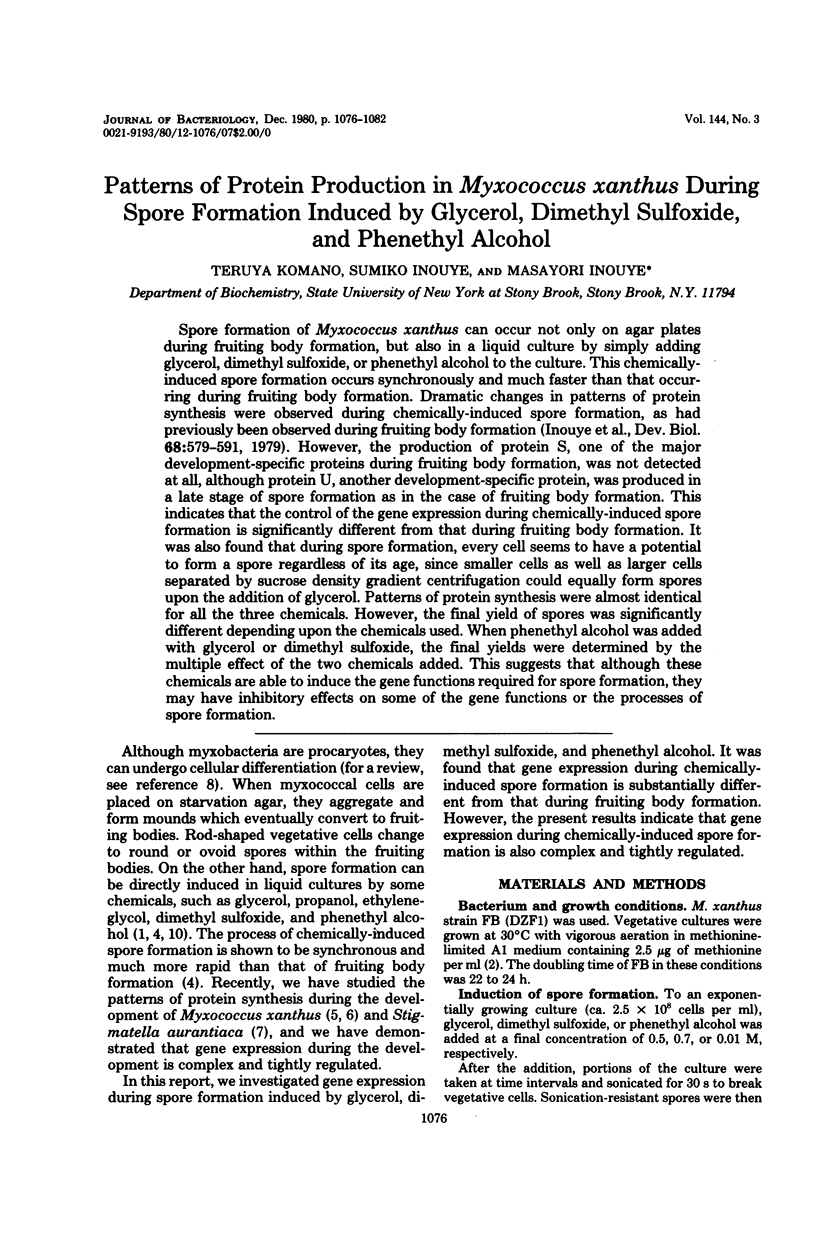
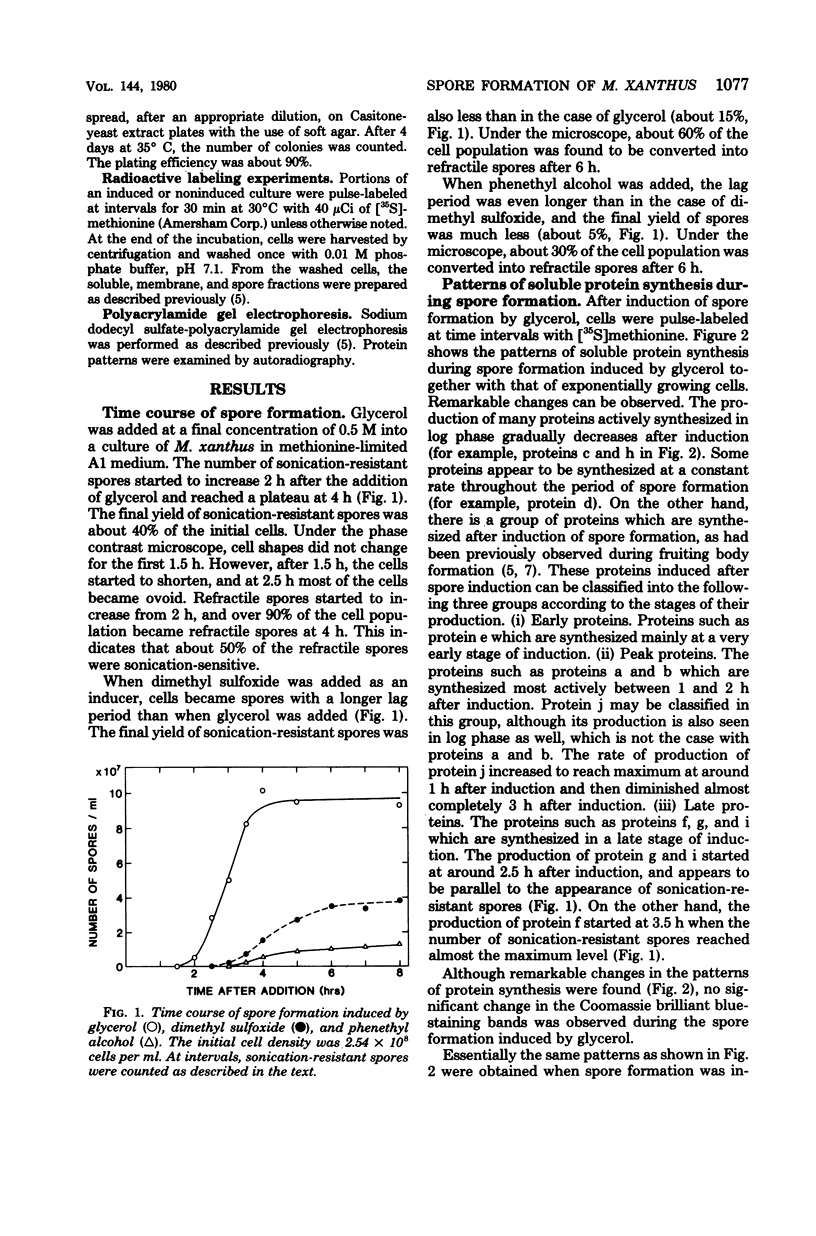
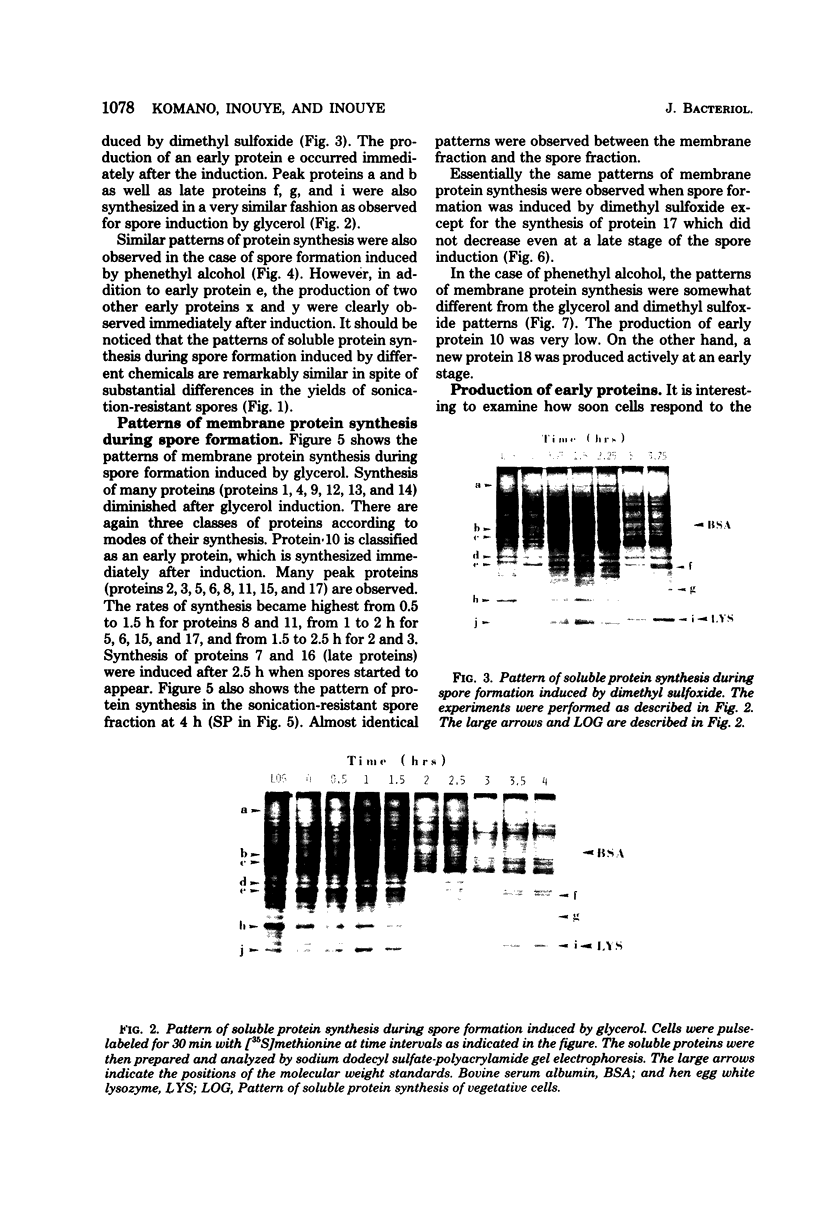
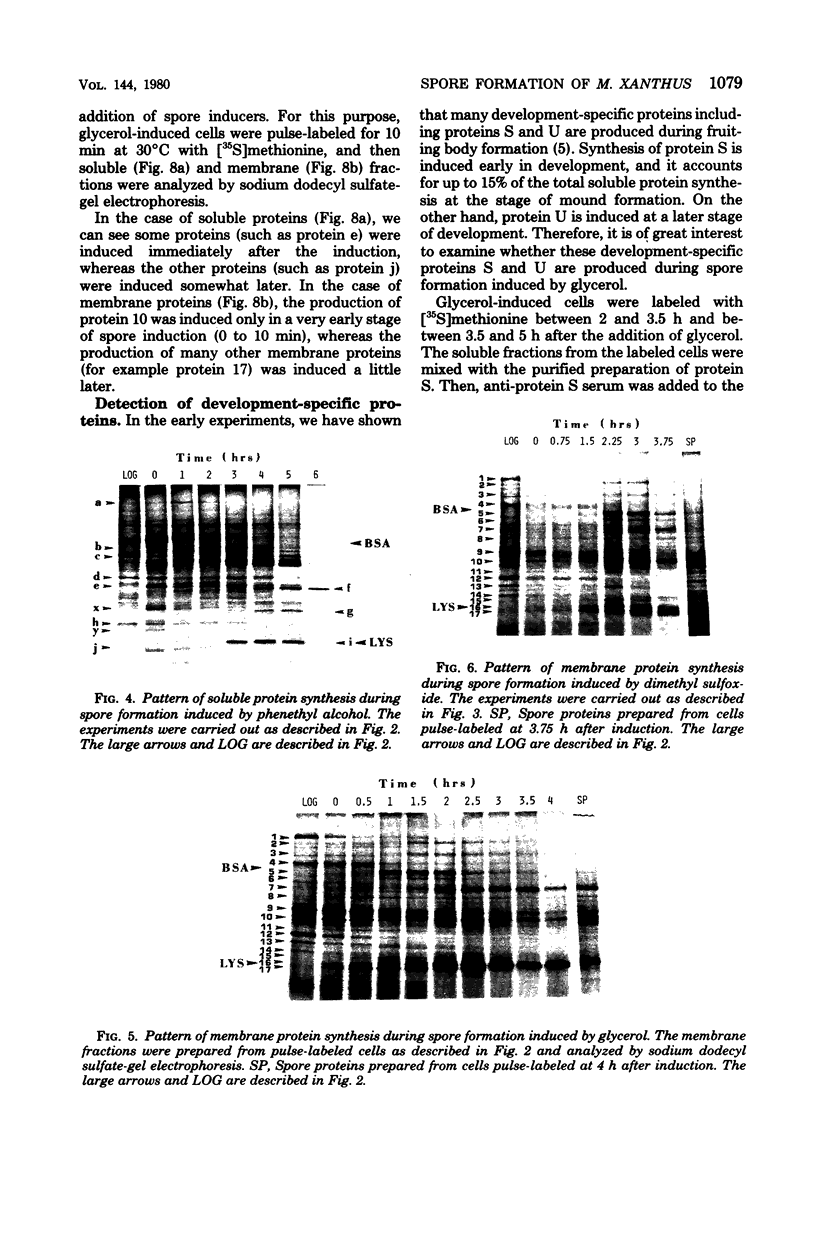
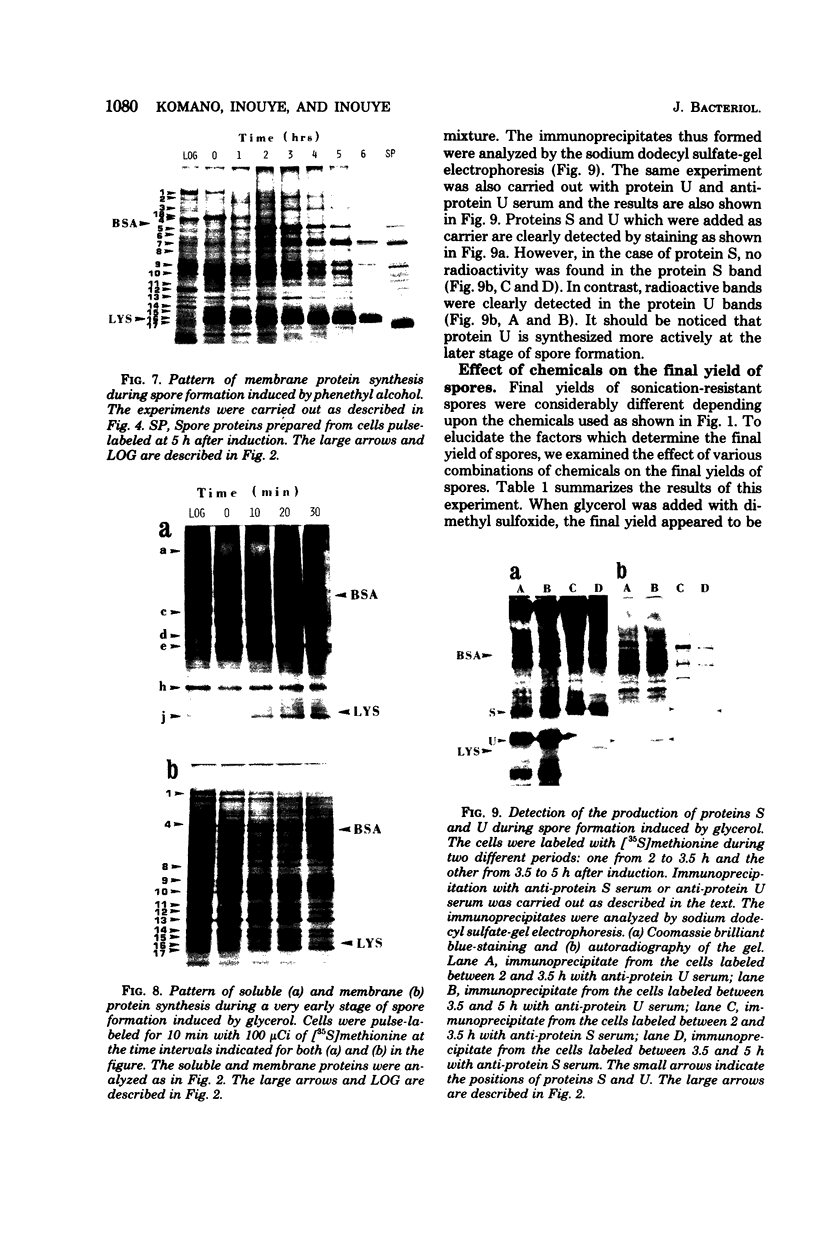
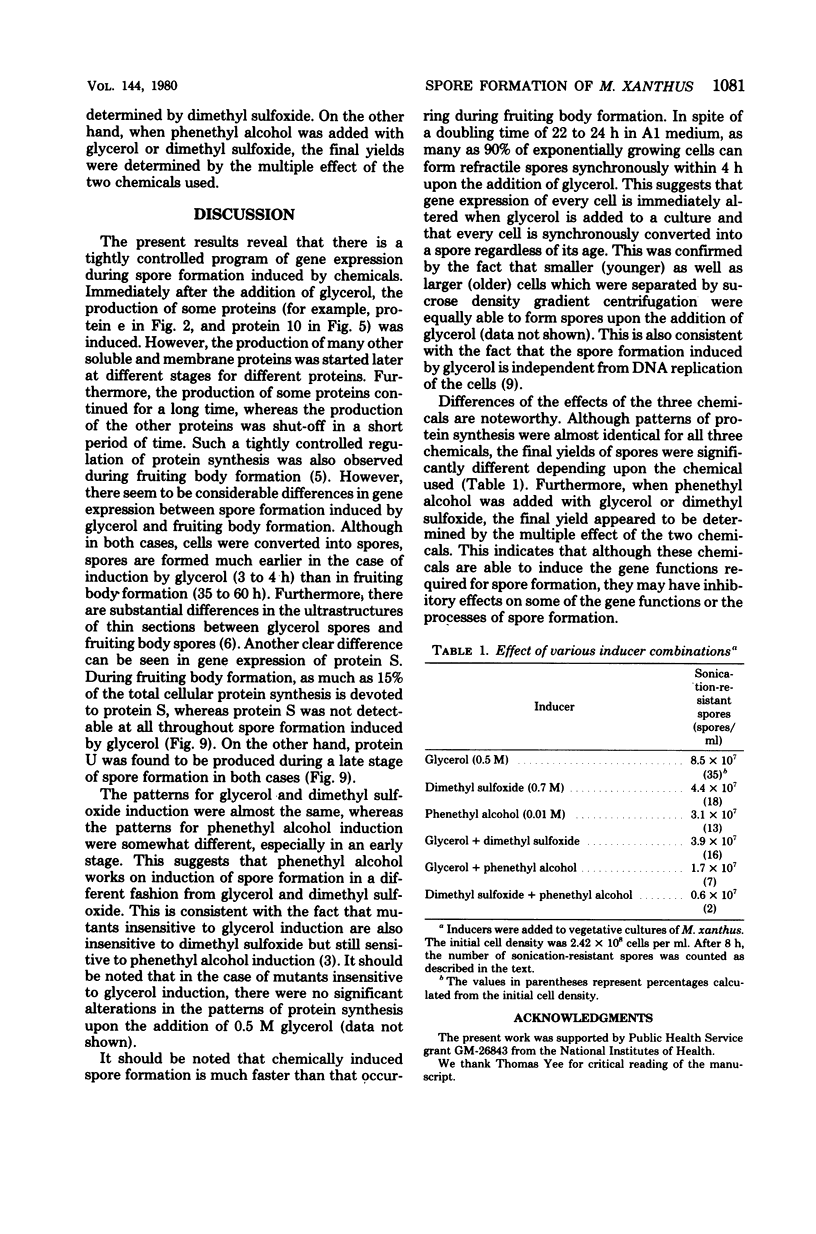
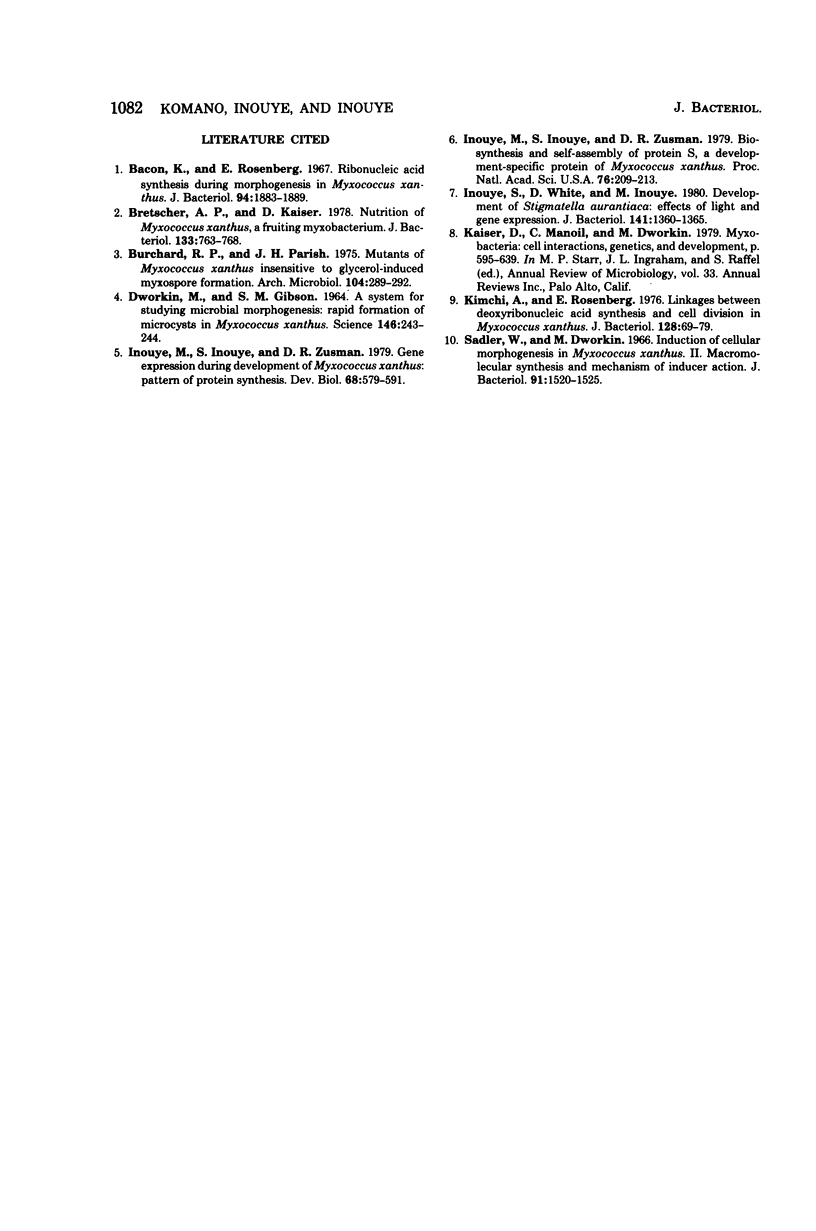
Images in this article
Selected References
These references are in PubMed. This may not be the complete list of references from this article.
- Bacon K., Rosenberg E. Ribonucleic acid synthesis during morphogenesis in Myxococcus xanthus. J Bacteriol. 1967 Dec;94(6):1883–1889. doi: 10.1128/jb.94.6.1883-1889.1967. [DOI] [PMC free article] [PubMed] [Google Scholar]
- Bretscher A. P., Kaiser D. Nutrition of Myxococcus xanthus, a fruiting myxobacterium. J Bacteriol. 1978 Feb;133(2):763–768. doi: 10.1128/jb.133.2.763-768.1978. [DOI] [PMC free article] [PubMed] [Google Scholar]
- Burchard R. P., Parish J. H. Mutants of Myxococcus xanthus insensitive to glycerol-induced myxospore formation. Arch Microbiol. 1975 Aug 28;104(3):289–292. doi: 10.1007/BF00447339. [DOI] [PubMed] [Google Scholar]
- DWORKIN M., GIBSON S. M. A SYSTEM FOR STUDYING MICROBIAL MORPHOGENESIS: RAPID FORMATION OF MICROCYSTS IN MYXOCOCCUS XANTHUS. Science. 1964 Oct 9;146(3641):243–244. doi: 10.1126/science.146.3641.243. [DOI] [PubMed] [Google Scholar]
- Inouye M., Inouye S., Zusman D. R. Biosynthesis and self-assembly of protein S, a development-specific protein of Myxococcus xanthus. Proc Natl Acad Sci U S A. 1979 Jan;76(1):209–213. doi: 10.1073/pnas.76.1.209. [DOI] [PMC free article] [PubMed] [Google Scholar]
- Inouye M., Inouye S., Zusman D. R. Gene expression during development of Myxococcus xanthus: pattern of protein synthesis. Dev Biol. 1979 Feb;68(2):579–591. doi: 10.1016/0012-1606(79)90228-8. [DOI] [PubMed] [Google Scholar]
- Inouye S., White D., Inouye M. Development of Stigmatella aurantiaca: effects of light and gene expression. J Bacteriol. 1980 Mar;141(3):1360–1365. doi: 10.1128/jb.141.3.1360-1365.1980. [DOI] [PMC free article] [PubMed] [Google Scholar]
- Kaiser D., Manoil C., Dworkin M. Myxobacteria: cell interactions, genetics, and development. Annu Rev Microbiol. 1979;33:595–639. doi: 10.1146/annurev.mi.33.100179.003115. [DOI] [PubMed] [Google Scholar]
- Kimchi A., Rosenberg E. Linkages between deoxyribonucleic acid synthesis and cell division in Myxococcus xanthus. J Bacteriol. 1976 Oct;128(1):69–79. doi: 10.1128/jb.128.1.69-79.1976. [DOI] [PMC free article] [PubMed] [Google Scholar]
- Sadler W., Dworkin M. Induction of cellular morphogenesis in Myxococcus xanthus. II. Macromolecular synthesis and mechanism of inducer action. J Bacteriol. 1966 Apr;91(4):1520–1525. doi: 10.1128/jb.91.4.1520-1525.1966. [DOI] [PMC free article] [PubMed] [Google Scholar]









